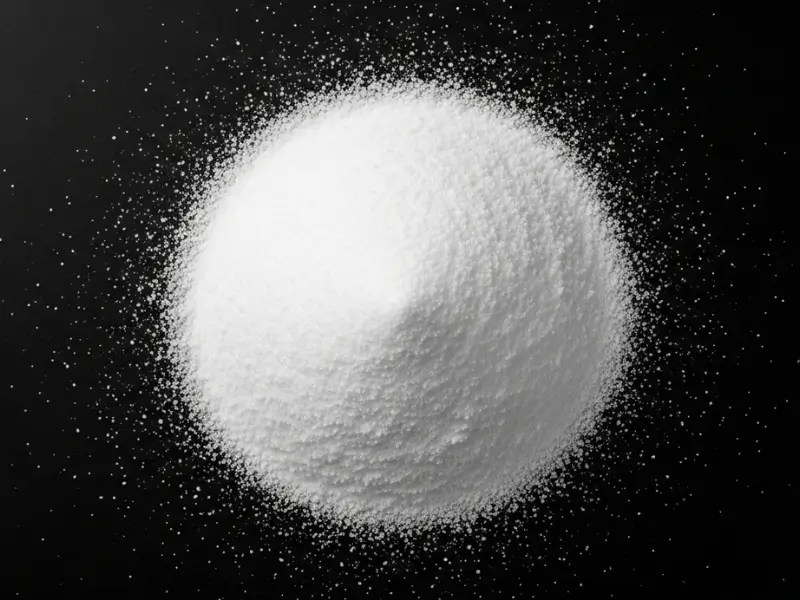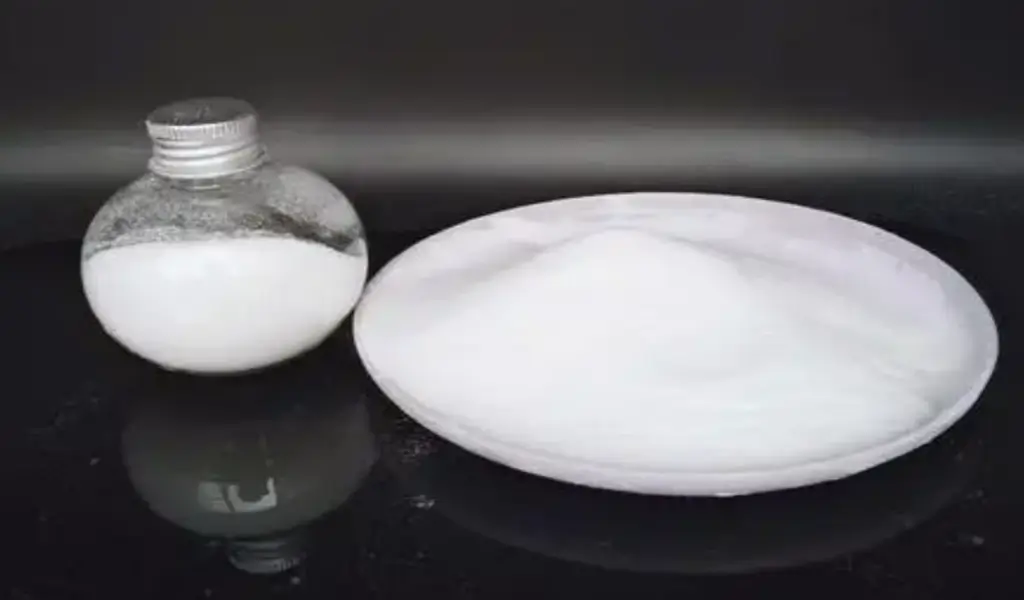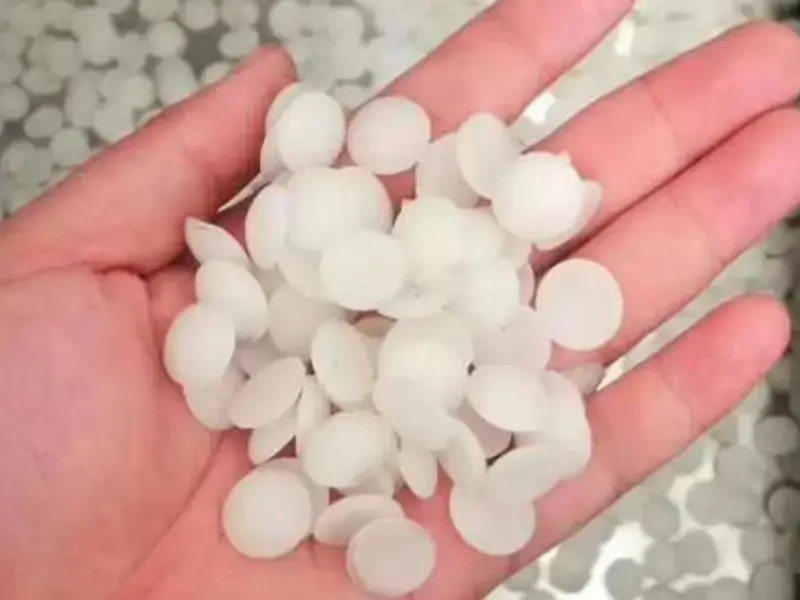CPVC is ideal for outdoor plumbing due to its high UV resistance, heat tolerance, and long-term durability, making it reliable for irrigation and hot-water systems in harsh environments.
1. Introduction to CPVC
CPVC stands for Chlorinated Polyvinyl Chloride, a thermoplastic material that is particularly well-suited for various plumbing and piping applications, especially outdoors. What’s the real story? The increasing need for reliable, durable materials in outdoor settings has led to a significant interest in CPVC. Its advantages over conventional PVC in outdoor applications include enhanced resistance to extreme temperatures and harsh environmental conditions.
Understanding CPVC is crucial for industries involved in construction, plumbing, and irrigation. Unlike conventional PVC, which can become brittle and less effective over time due to UV exposure, CPVC is designed to withstand the elements. With a better understanding of its chemical structure and properties, users can appreciate why CPVC is preferred in many outdoor scenarios.
CPVC not only offers improved performance but also showcases better longevity, reducing long-term maintenance costs. The following sections will delve into its properties, installation benefits, applications, and how it compares to other materials like PVC and HDPE in outdoor settings.
| Property | CPVC | PVC |
|---|---|---|
| Flexibility | High | Moderate |
| Temperature Resistance | Excellent | Moderate |
| Chemical Resistance | High | Moderate |
2. Understanding CPVC Properties
When evaluating materials for outdoor use, it’s essential to understand the properties of CPVC. But here’s the kicker: CPVC offers unique characteristics that promote durability and performance. Its chemical composition includes chlorine, which significantly enhances its resistance to temperature and aggressive chemicals, making it especially useful in environments subjected to harsh weather conditions.
One of the most notable traits of CPVC is its ability to handle high temperatures, when compared to PVC and HDPE,which is particularly important for plumbing applications carrying hot water. CPVC can endure temperatures up to 200°F (93°C), whereas traditional PVC typically operates effectively only up to about 140°F (60°C). as explained in ‘’CPVC vs PVC: Key Differences, Properties & Applications Guide‘’.This characteristic alone makes CPVC a more suitable option for outdoor applications, where water temperatures may fluctuate dramatically.
Additionally, CPVC’s resistance to UV rays prevents fading and degradation over time, allowing it to maintain its structural integrity even with prolonged exposure to sunlight. That’s why CPVC for outdoor use remains a preferred material among modern contractors and system designers. An example of this can be seen in irrigation systems installed in sunny regions, where CPVC pipes have been shown to outlast PVC alternatives by several years, thus providing an excellent return on investment.
| Property | CPVC | PVC |
|---|---|---|
| High Temperature Resistance | Up to 200°F | Up to 140°F |
| UV Resistance | Excellent | Moderate |
| Longevity | Longer lifespan | Shorter lifespan |
3. Durability in Harsh Weather Conditions
What matters most when it comes to outdoor applications? Durability is a key factor. CPVC excels in this regard, as it was specifically designed to be resilient in adverse conditions. Ready for the good part? Its durability means that projects can be completed with confidence in the long-term performance of the materials selected.This makes weather-resistant CPVC an optimal solution in outdoor system design.
First and foremost, CPVC’s resistance to corrosion compared to metal or HDPE systems, makes it ideal for applications where exposure to soil chemicals or high moisture is common. Unlike metal pipes, which can quickly rust or corrode, CPVC maintains its integrity over time. An excellent example of CPVC adaptability can be found in underground systems installed in coastal areas ‘’CPVC for Outdoor Applications: A Complete Durability Guide,‘’ where salts and other chemicals would normally compromise other types of piping.
Moreover, high-performance CPVC pipes can withstand temperature fluctuations without splitting or breaking, which is critical for areas with extreme weather. In cold climates, for instance, where freezing temperatures can lead to pipe bursts, CPVC’s flexibility accounts for some expansion and contraction without compromising its overall integrity.
Overall, the durability of CPVC translates into fewer repairs and replacements needed over time, significantly benefiting organizations that rely on these systems for essential outdoor applications, from irrigation to construction.
| Condition | CPVC Durability | Other Materials Durability |
|---|---|---|
| Extreme Cold | Excellent | Poor |
| High Moisture Areas | Excellent | Moderate |
| Salt and Chemical Exposure | High | Low |
4. Chemical Resistance of CPVC
The ability of a material to resist chemical degradation is crucial for outdoor applications, especially in environments such as chemical-heavy outdoor systems where exposure to various substances is inevitable. But here’s the kicker: CPVC is one of the best performers when it comes to chemical resistance. Its composition allows it to withstand exposure to a broader range of chemicals compared to conventional PVC.
CPVC is particularly adept at handling many industrial chemicals, which makes it a preferred option for chemical processing industries that require outdoor piping. For example, in agricultural settings, CPVC can successfully transport fertilizers and pesticides without degrading over time. Numerous case studies show that CPVC piping installed in agricultural irrigation systems has outlasted its PVC counterparts, even under the same chemical exposures.
Additionally, CPVC has the remarkable ability to handle high levels of chlorine, making it an excellent choice for systems where chlorinated water is used. In swimming pool applications, where both chemicals and high temperatures apply, CPVC pipes have proven to maintain their structural integrity much longer than other materials would under similar circumstances.
This high degree of chemical resistance directly correlates with the reduced need for replacement and maintenance, highlighting CPVC as an economically and environmentally sensible choice.These traits position CPVC for outdoor chemical resistance applications as a standout option.
| Chemical Exposure | CPVC Resistance | PVC Resistance |
|---|---|---|
| Acids | Excellent | Moderate |
| Bases | High | Low |
| Chlorinated Water | Excellent | Low |
5. Installation and Maintenance Advantages
Ready for a key insight? The installation and maintenance advantages of CPVC make it a preferred material for outdoor applications. Its lightweight nature simplifies transport and handling during installation, reducing labor costs and durations compared to heavier materials like metal piping.
Additionally, the jointing methods for CPVC are straightforward. Unlike some materials that require such as metal or PPR systems complex welding or soldering, CPVC uses solvent cement, which allows for quick fusion of pipes and fittings. This feature not only speeds up the installation process but also helps ensure a strong and durable connection.
In terms of maintenance, CPVC’s resilience to scaling and corrosion means that systems require significantly less upkeep. Many users have reported that, compared to PVC or metal alternatives, CPVC installations often remain functional with little to no maintenance for extended periods. For instance, in commercial irrigation systems, CPVC has shown to operationally outperform PVC by allowing for uninterrupted water flow and minimal blockage issues.
In outdoor piping installations, CPVC installation benefits are especially evident.Consequently, the reduced need for maintenance translates to cost savings over the lifespan of the installation, supporting a more favorable total cost of ownership for projects incorporating CPVC materials.
| Advantage | CPVC | Other Materials |
|---|---|---|
| Installation Method | Solvent Cement | Welding/Soldering |
| Weight | Lightweight | Heavy |
| Maintenance Needs | Low | High |
6. Applications of CPVC in Outdoor Settings
What kind of applications can you expect for CPVC in outdoor settings? The answer is vast and diverse. CPVC is utilized across various industries, and its benefits make it a versatile choice. From plumbing to irrigation systems, CPVC demonstrates outstanding suitability and performance.
In the agricultural sector, CPVC pipes are increasingly used for irrigation systems due to their ability to withstand chemical exposure and varying temperatures. This flexibility ensures a reliable water supply to crops, enhancing productivity while minimizing maintenance requirements.
In construction, CPVC is often selected for outdoor plumbing systems due to its corrosion resistance and high durability. Many building codes endorse CPVC for use in water distribution systems, particularly in structures located in harsh environments, such as coastal areas where saltwater exposure is common.
Additionally, CPVC is frequently used in swimming pool construction for plumbing and drainage systems. Its ability to handle chlorinated water and UV exposure makes it an ideal choice, ensuring that the piping lasts longer without degrading.
Ultimately, the versatility and robust performance of CPVC enable its application across a wide range of outdoor uses, showcasing its adaptability and reliability.
| Application | Benefit | Industry |
|---|---|---|
| Irrigation Systems | Chemical resistance | Agriculture |
| Plumbing Systems | Corrosion resistance | Construction |
| Swimming Pools | UV and chlorinated water resistance | Recreation |
7. Cost Analysis for Outdoor Use
For those comparing CPVC vs PVC for outdoor projects.Let’s talk numbers: understanding the cost aspect can often be a deciding factor for many industries. When analyzing the costs associated with CPVC for outdoor use, it is essential to consider both the initial investment and the long-term savings that result from reduced maintenance and replacement needs.
Initially, CPVC materials may come at a higher cost than PVC. However, the durability and longevity of CPVC almost always translate into overall savings. For example, projects utilizing CPVC often report fewer repairs and replacements, thus lowering operational costs over time. A case study of an agricultural irrigation project indicated that using CPVC reduced repair costs (How CPVC vs PVC Affects Time and Cost Savings) by over 30% when compared to PVC installations.
Additionally, while installation costs might initially appear higher, the straightforward jointing methods save labor time and costs, further contributing to total project savings. For contractors, the reduced need for maintenance and repair keeps operational expenses lower, supporting more profitable long-term project outcomes.
In summary, while the upfront costs of CPVC might be higher, the long-term savings related to its durability and low maintenance needs position CPVC as a cost-effective solution for outdoor applications.
| Cost Factor | CPVC | PVC |
|---|---|---|
| Initial Material Cost | Higher | Lower |
| Long-Term Savings | Significant | Minimal |
| Labor Cost | Lower | Higher |
8. Environmental Impact of CPVC
Let’s dive into a crucial topic: environmental considerations. As industries continually strive to improve their sustainability practices, CPVC emerges as an eco-friendly option for outdoor applications. But here’s the kicker: CPVC not only serves practical functions; its overall environmental impact is significantly reduced compared to alternative materials.
One key factor is the recyclability of CPVC. At the end of its lifecycle, CPVC can be recycled, reducing the total waste generated by installations. Many facilities have implemented recycling programs specifically for CPVC, allowing materials to be repurposed effectively.
Additionally, the production of CPVC uses less energy than traditional PVC, leading to lower carbon emissions associated with its manufacture. The reduced environmental footprint has led many organizations to prefer CPVC for applications that align with their sustainability initiatives.
In terms of compliance with environmental regulations, CPVC also holds advantages. Many local and national regulations encourage or require the use of recyclable materials, making CPVC a choice that aligns with modern compliance considerations.
Overall, CPVC’s eco-friendliness adds significant appeal for organizations looking to enhance their sustainability efforts while maintaining high performance in outdoor projects.In eco-sensitive industries, CPVC sustainability is a growing factor in procurement decisions.
| Environmental Impact | CPVC | PVC |
|---|---|---|
| Recyclability | High | Moderate |
| Energy Use in Production | Lower | Higher |
| Compliance with Regulations | Excellent | Good |
9. Regulatory Compliance and Standards
Understanding regulatory compliance is essential for many industries, especially when it comes to construction and plumbing materials. This is where it gets interesting: CPVC meets various standards that increase its viability for outdoor applications. Compliance with industry regulations ensures that materials used are safe and perform as expected.
CPVC pipes are often certified by several reputable organizations, including the American National Standards Institute (ANSI) and the National Sanitation Foundation (NSF). These certifications confirm that CPVC can safely transport drinking water and meet stringent health and safety standards, especially important in outdoor plumbing applications.
Moreover, many local codes will specify the acceptable materials for plumbing, typically favoring those that have proven performance records. CPVC’s compliance with regulations means it remains a reliable option for contractors and builders looking to adhere to safe construction practices.
With greater awareness of safety and quality, organizations are scrutinizing material choices more than ever. Choosing CPVC not only adheres to compliance regulations but also promotes the use of high-quality, reliable materials that stand the test of time.
| Certification | CPVC Compliance | PVC Compliance |
|---|---|---|
| ANSI | Yes | Yes |
| NSF | Yes | Varies |
| Local Codes | Generally Accepted | Varies |
10. Expert Opinions and Recommendations
What do industry experts have to say about CPVC? Their insights can be invaluable in framing the best practices for material selection for outdoor applications. Ready for the good part? Expert opinions often highlight the necessity of selecting plumbing materials that offer durability and safety, with CPVC frequently emerging as a top contender.
Consultants and industry veterans emphasize that using CPVC can mitigate long-term costs associated with replacements and repairs. For instance, an expert in construction materials suggests that contractors look favorably upon CPVC for projects in harsh environments, particularly those involving irrigation or chemical transport.
Additionally, expert recommendations extend to installation practices, where they encourage using certified contractors familiar with CPVC to ensure the most effective results. They advise utilizing approved fittings and solvent cements to ensure proper installation, which is vital for maintaining CPVC’s performance standards.
Ultimately, expert opinions serve as an important guideline for manufacturers, builders, and contractors as they navigate material choices in the ever-evolving landscape of construction and plumbing solutions.
| Expert Opinion | Recommendation | Rationale |
|---|---|---|
| Industry Veteran | Use CPVC for harsh environments | Durability and longevity |
| Construction Consultant | Ensure certified installation methods | Quality assurance |
| Material Specialist | Favor CPVC over PVC | Better long-term outcome |
11. Consumer Preferences
What are consumers looking for in materials for outdoor projects? Consumer preferences play a significant role in shaping market trends, and when it comes to outdoor applications, CPVC is increasingly favored. But here’s the kicker: these preferences often reflect a deeper understanding of performance, sustainability, and cost-effectiveness.
Recent surveys indicate that consumers are becoming more informed about the materials they choose for construction and plumbing projects. Many recognize the longstanding benefits of CPVC, particularly its resistance to environmental degradation, which results in longer-lasting installations.
Moreover, as sustainability issues gain prominence, consumers are more inclined to choose materials that align with their environmental values. CPVC stands out as a responsible option; its recyclability and lower production impact resonate with buyers wary of their environmental footprint.
This evolving consumer consciousness influences purchasing decisions, and manufacturers are responding by highlighting CPVC in their offerings, communicating its benefits, and ensuring compliance with higher standards. Understanding consumer preferences enables businesses to align their marketing strategies and product lines more effectively.CPVC’s reputation as a reliable outdoor piping material continues to grow.
| Consumer Preference | CPVC | PVC |
|---|---|---|
| Durability | High | Moderate |
| Sustainability | Preferred | Lower preference |
| Cost-effectiveness | Long-term savings | Short-term savings |
12. Comparative Analysis with Alternative Materials
What happens when you compare CPVC with other alternatives? Conducting a comparative analysis is essential for industries choosing the right materials for outdoor use. In this section, we’ll examine how CPVC stacks up against PVC, HDPE, and metal piping systems, highlighting each option’s benefits and drawbacks.
First, when contrasted with PVC, CPVC notably outperforms in temperature resistance, making it the better choice for hot water systems and areas with fluctuating temperatures. PVC may be more affordable upfront but generally falls short in long-term reliability.
On the other hand, while HDPE (High-Density Polyethylene) is flexible and resistant to impact, it lacks the high-temperature tolerance associated with CPVC. Moreover, HDPE can be more susceptible to UV degradation unless treated, which may necessitate additional protective measures, escalating costs.
When comparing CPVC to metal piping, the latter usually involves higher installation costs and susceptibility to corrosion since most metals will deteriorate over time. CPVC avoids these issues while providing a more lightweight solution that allows for easier installation.
In summary, despite some initial cost differences, CPVC consistently proves to be a more reliable, cost-effective solution in outdoor applications compared to its alternatives.
| Material | Temperature Resistance | UV Resistance | Corrosion Resistance |
|---|---|---|---|
| CPVC | Excellent | High | High |
| PVC | Moderate | Moderate | Low |
| HDPE | Low | Moderate | Moderate |
| Metal | Low | Low | Low |
13. Maintenance Tips for CPVC Outdoor Applications
What do you need to know about maintaining CPVC systems? Understanding how to care for CPVC installations is vital for ensuring their longevity. This is where it gets interesting: proper maintenance practices can significantly extend the life of outdoor CPVC systems while maintaining performance.
One essential maintenance tip is to routinely inspect the connections and joints in CPVC systems. While CPVC is generally low-maintenance, checking for any signs of wear, leaks, or fittings loosening is wise, especially in environments subject to extreme weather changes.
Another tip is to flush water lines periodically. Although CPVC’s resistance to scaling is superior, building up sediment within pipes can happen, especially in agricultural contexts. Regular flushing helps maintain peak performance and avoids blockages.
Finally, protect CPVC from extreme temperatures during installation; while CPVC is durable, extreme cold can impact joint integrity during the installation process. Ensuring that installations are scheduled during moderate temperatures can yield better long-term outcomes.
By following these maintenance tips, organizations can ensure their CPVC installations will continue to thrive in outdoor conditions, supporting long-term reliability and efficacy.
| Maintenance Tip | Recommended Practice | Frequency |
|---|---|---|
| Inspect Connections | Check for leaks | Monthly |
| Flush Water Lines | Remove sediment | Quarterly |
| Timing of Installation | Schedule during moderate temperatures | As needed |
14. FAQ
As we conclude this exploration into CPVC for outdoor use, it’s clear that this material boasts numerous advantages that position it as a leading choice for outdoor applications. From its impressive durability and chemical resistance to its low maintenance requirements and environmental benefits, CPVC stands out in an increasingly eco-conscious market.
What’s the takeaway? With ongoing advancements and growing consumer preferences leaning toward sustainable options, CPVC is expected to see continued growth in its adoption across various industries. As manufacturers and consumers alike recognize the long-term value and performance of CPVC, those looking to the future should consider this material for their outdoor projects.
Ultimately, investing in CPVC not only contributes to operational efficiency but also aligns with emerging trends towards sustainability and quality assurance in construction and plumbing applications.
Q1: What is CPVC?
CPVC stands for Chlorinated Polyvinyl Chloride, a durable thermoplastic material known for its outstanding performance in plumbing and piping applications, particularly outdoors.
Q2: How does CPVC differ from regular PVC?
CPVC is modified to enhance its temperature and chemical resistance, making it suitable for high-temperature applications and environments that expose materials to harsh conditions.
Q3: Why is CPVC recommended for outdoor use?
CPVC is favored for outdoor applications due to its UV resistance, high durability, and ability to withstand extreme temperatures and chemical exposure.
Q4: What are common applications of CPVC outdoors?
CPVC is commonly utilized in agricultural irrigation, plumbing systems for buildings, and swimming pool installations, each benefitting from its versatility and robustness.
Q5: How does CPVC impact the environment?
CPVC has a lower environmental impact due to its recyclability and decreased energy use during production compared to alternative materials, making it an eco-friendly option.





